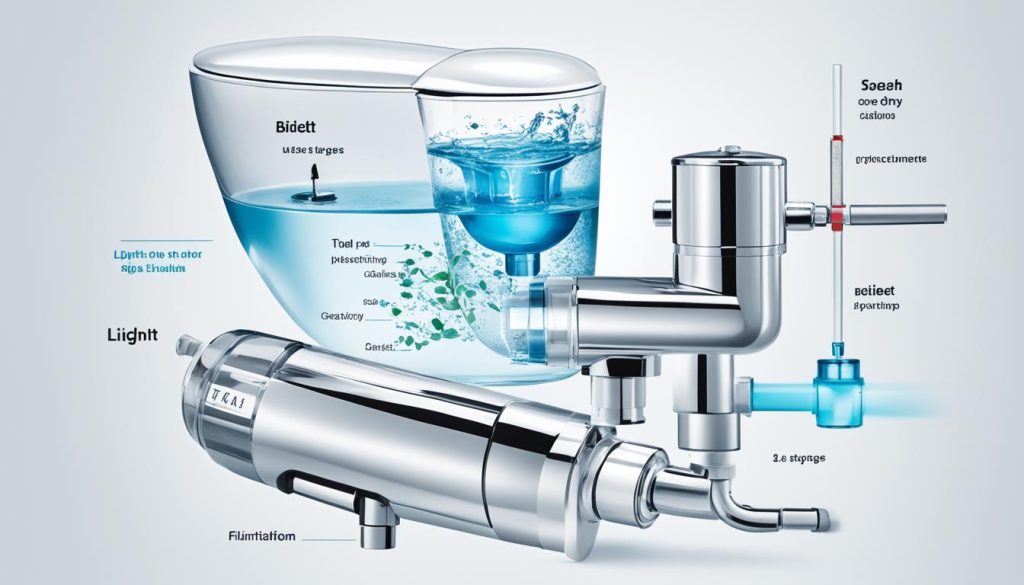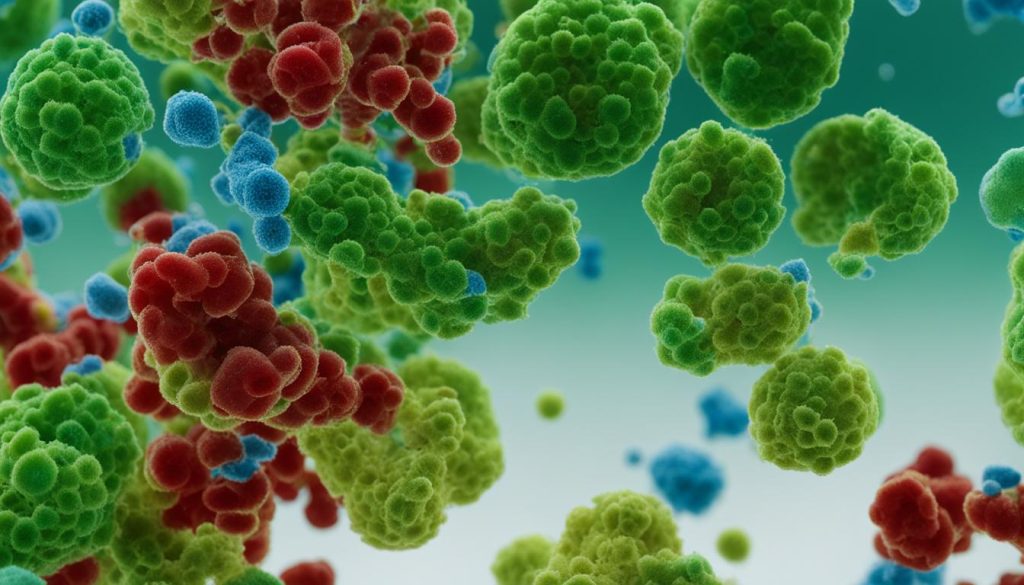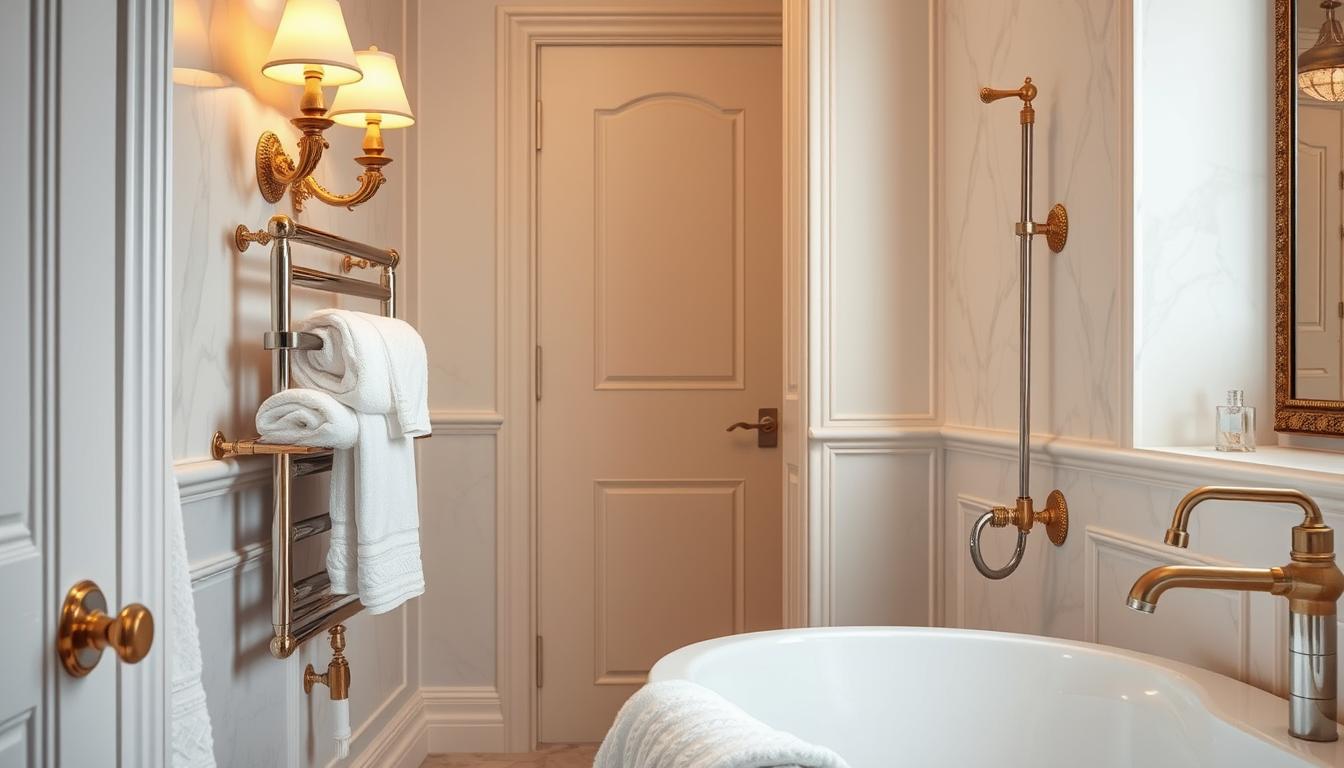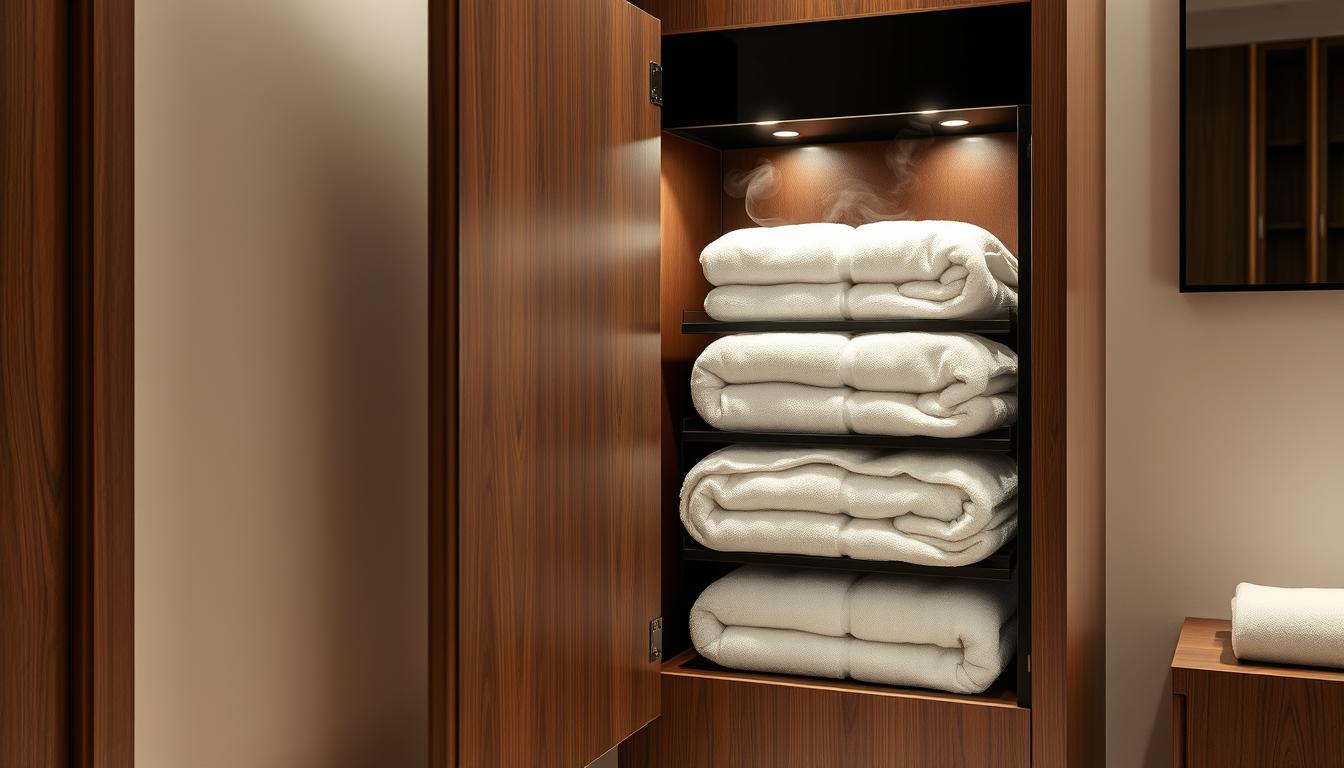Are you curious about where the water for your bidet comes from? Let’s explore the bidet water source and supply to uncover the truth.
Key Takeaways:
- Bidet water is sourced directly from your home water supply, not the toilet tank.
- Bidet toilets and bidet attachments are connected to the same water line that supplies your shower, sink, bath, and refrigerator.
- Electric bidets heat the water using a built-in electric water heater, while non-electric models use warm water from the hot-water shut-off valve under a bathroom sink.
- Freestanding bidets have their own separate water supply lines.
- Bidet water is safe and clean, as it comes from the same source as the water you drink and use for other daily activities.
How the Water Supply Works for Bidets
Bidet water supply depends on the type of bidet being used. Bidet toilet seats draw water directly from your home’s regular water supply, just like the kitchen sink tap and bathroom faucet. The water supply line for bidet toilet seats and toilet tanks is connected through a T-valve or Y-connector, ensuring that the water for the bidet is separate from the toilet.
Freestanding bidets, on the other hand, have their own dedicated water supply lines, completely separate from the toilet. This ensures that the water used for bidet functions is clean and uncontaminated.
Certain bidet attachments and non-electric bidets may operate using a different water supply line. These bidets typically have a connection point near the toilet and draw water from the same source as the bidet toilet seat or freestanding bidet.
Bidet Water Supply Types
There are three main types of bidet water supply:
- Bidet Toilet Seats: Connected to the home’s regular water supply via a T-valve or Y-connector.
- Freestanding Bidets: Have their own dedicated water supply lines separate from the toilet.
- Bidet Attachments and Non-electric Bidets: Usually draw water from the same source as bidet toilet seats or freestanding bidets.
No matter the type, bidet water originates from the same clean water supply that you use for other everyday activities. This ensures a hygienic and refreshing cleansing experience.
| Type | Water Supply |
|---|---|
| Bidet Toilet Seats | Connected to the home’s regular water supply via a T-valve or Y-connector |
| Freestanding Bidets | Have their own dedicated water supply lines separate from the toilet |
| Bidet Attachments and Non-electric Bidets | Usually draw water from the same source as bidet toilet seats or freestanding bidets |
Is Bidet Water Safe and Clean?
Bidet water cleanliness, bidet water safety, and bidet hygiene are important considerations for those considering the use of bidets. It is crucial to understand the source and quality of the water used for bidet washes in order to make an informed decision about bidet usage.
Bidet water is sourced directly from your home water supply, which is the same water you drink and use for daily activities. This means that the water used in a bidet wash is sanitary and does not come from the toilet bowl. In fact, the cleanliness of bidet water is comparable to that of the water used in your shower or bathroom sink.
Many bidet models incorporate self-cleaning systems for the nozzle to ensure optimal cleanliness. These systems help prevent the buildup of bacteria or other contaminants that may accumulate over time. Some bidets also offer additional features such as temperature control or filtration systems, further enhancing water safety and cleanliness.
Benefits of Bidet Water Cleanliness
Ensuring bidet water cleanliness offers several advantages:
- Promotes personal hygiene: Bidet water provides a thorough and effective cleansing experience, promoting better hygiene and reducing the risk of infections compared to traditional toilet paper.
- Reduces environmental impact: Bidets use a minimal amount of water per wash, making them more environmentally friendly than using toilet paper.
- Enhances comfort: Temperature control features in bidets allow users to customize the water temperature according to their preference, enhancing comfort during use.
Overall, bidet water is safe and clean for use. By choosing a bidet with self-cleaning systems and optional filtration, you can further ensure the hygiene and safety of the water used for bidet washes.

| Type of Bidet | Water Source | Additional Features |
|---|---|---|
| Bidet Toilet Seat | Connected to the same water line that supplies showers, sinks, and other fixtures in your home | Self-cleaning systems, temperature control, filtration |
| Freestanding Bidet | Has its own separate water supply line | N/A |
| Bidet Attachment | May use a different water supply line or be connected through a T-valve or Y-connector | N/A |
The table above summarizes the different types of bidets and their water sources, as well as any additional features they may have. It is important to note that bidet water safety and cleanliness can vary depending on the specific model and brand.
Health Considerations with Bidet Water
Proper use of bidets is generally safe and does not pose significant health risks. However, it is important to be aware of certain considerations to ensure bidet water safety and minimize the risk of bidet water infections.
Water Pressure and Nozzle Position
The risk of bidet water entering the urethra can be influenced by the water pressure and the angle of the bidet nozzle. It is crucial to follow the manufacturer’s recommendations regarding the appropriate water pressure setting and to adjust the nozzle position to avoid directing the water stream towards sensitive areas. By maintaining the correct water pressure and proper nozzle position, you can reduce the risk of bidet water entering the urethra.
| Risk Factors | Preventive Measures |
|---|---|
| High water pressure | Adjust the water pressure to a comfortable level recommended by the manufacturer. |
| Improper nozzle positioning | Ensure the bidet nozzle is angled correctly and directed away from sensitive areas. |
Women and Filtration Systems
For women, bidets equipped with filtration systems can provide an additional layer of protection against bidet water infections. These filtration systems help to remove impurities and contaminants, minimizing the risk of infection. If you are a woman and concerned about bidet water safety, consider choosing a bidet with a filtration system.
“Using a bidet with a filtration system can provide enhanced safety and peace of mind, especially for women who may be more susceptible to infections.”
Proper Hygiene and Maintenance
To ensure bidet water safety, it is essential to practice proper hygiene and maintenance. Regularly clean and sanitize your bidet to prevent bacteria or other harmful microorganisms from accumulating. Avoid sharing your bidet with others, as this can increase the risk of cross-contamination and infections.
Remember, while the risk of bidet water infections is generally low, it is crucial to use bidets responsibly and follow the manufacturer’s guidelines to minimize any potential health risks.

Common Misconceptions about Bidets
There are several misconceptions surrounding bidets that can deter people from using them. Bidets are often misunderstood as being unsanitary or difficult to operate. However, bidets are more sanitary than traditional toiletry supplies like toilet paper. They provide a thorough cleansing experience that can prevent infections and ensure better hygiene. Bidets use a minimal amount of water per wash, making them more environmentally friendly than using toilet paper.
While bidets have some disadvantages, such as a small chance of infections in women and the initial learning curve for first-time users, overall they offer many benefits for personal hygiene. Bidets provide a gentle and hygienic way to cleanse yourself after using the toilet. They can help reduce the risk of skin irritation and hemorrhoids caused by excessive wiping. Bidets also eliminate the need for toilet paper, reducing both waste and environmental impact.
It’s important to note that bidets come in various types and models, catering to different preferences and needs. Electric bidet seats offer additional features like heated water, adjustable water pressure, and air drying, providing a luxurious and customizable experience. Non-electric bidet attachments are more affordable and easy to install, making them a popular choice for those new to bidets.
FAQ
Where does bidet water come from?
Bidet water comes directly from your home water supply and is not sourced from the toilet tank. Bidet toilets and bidet attachments are connected to the same water line that supplies your shower, sink, bath, and refrigerator.
How is the water supply for bidets connected?
Bidet toilet seats draw water directly from the home’s regular water supply, the same as the kitchen sink tap and bathroom faucet. The water supply line for bidet toilet seats and toilet tanks is connected through a T-valve or Y-connector, ensuring that the water for the bidet is separate from the toilet.
Is bidet water safe and clean?
Bidet water is sourced directly from your home water supply, which is the same water you drink and use for daily activities. The water used in a bidet wash is sanitary and does not come from the toilet bowl. The cleanliness of bidet water is comparable to that of the water used in your shower or bathroom sink.
Are there health considerations with bidet water?
Proper use of bidets is generally safe and does not pose significant health risks. However, improper use or sharing of bidets can increase the risk of infection. It is important to follow the manufacturer’s recommendations for proper use and keep the nozzle at a distance from sensitive areas.
What are some common misconceptions about bidets?
There are several misconceptions surrounding bidets that can deter people from using them. Bidets are often misunderstood as being unsanitary or difficult to operate. However, bidets are more sanitary than traditional toiletry supplies like toilet paper. They provide a thorough cleansing experience that can prevent infections and ensure better hygiene.


